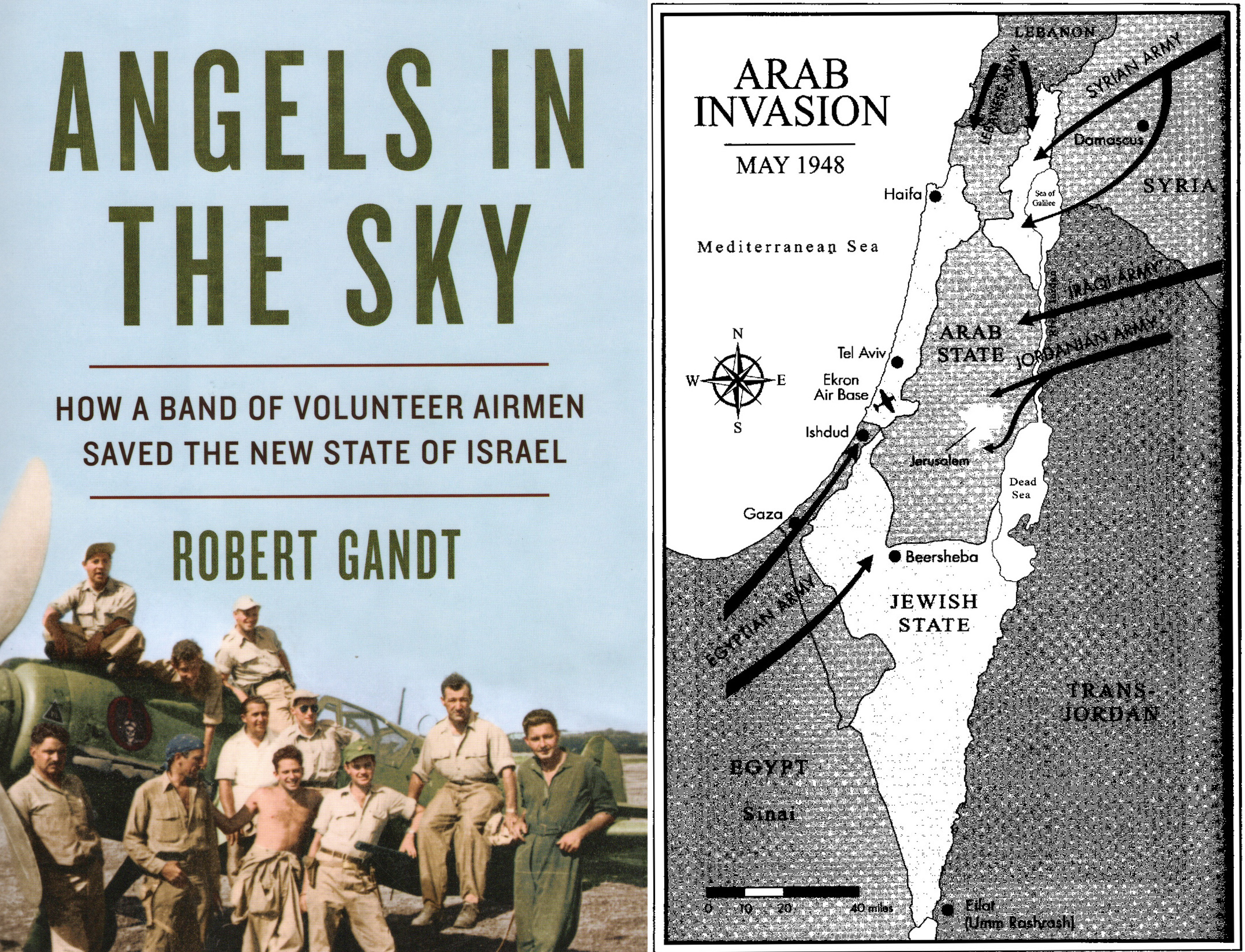Robert Gandt’s “Angels in the Sky” arrived in my mailbox just as I was wondering about the latest news from the Middle East. Hearing about how much of the world seems allied against the State of Israel since October 7, 2023 and how Israel has responded since, it seems to me we’ve heard this story a few times before. Consider when the entire Israel Air Force consisted of one German Messerschmidt ME-109 with a Czech engine and a propeller taken from a Heinkel He 111H bomber. The United States and England not only refused to provide aircraft or pilots back then, they forbade any support of the nascent country.
— James Albright

Updated:
2024-10-14
Israel, as an internationally recognized country, came into being in 1947 when the United Nations partitioned Palestine. The resulting slivers of land were practically designed to invite attack from Egypt, Lebanon, Syria, and what was then known as Transjordan. Armed with British Spitfires, many of Israel’s neighbors bombed with impunity, knowing there was no opposition Air Force. Then, on June 3, 1948, Mordechai “Modi” Alon, a founding member of 101 Squadron, took to the skies:
Alon swung out over the water, putting the sun behind him. As he drew nearer, he was able to identify the silhouettes. The two multiengine aircraft were C-47 Dakota transports configured as bombers. The Egyptians had used them for fifteen separate air attacks on the civilian population of Israel. The smaller, elliptical-winged escorts were their escorts. Spitfire fighters.
Alon was outmatched in numbers and firepower. He was counting on the factor of surprise. So far the Gyppos-the word they'd adopted for referring to the Egyptians-had shown a remarkable lack of real tactical skill.
Alon swept down from out of the sun. As he had hoped, they didn't see him. He locked on to the tail of one of the bombers. The Spitfires continued straight ahead, still oblivious to the danger.
Alon opened fire. The Messerschmitt rattled and vibrated from the combined chatter of the cannons and machine guns. To his surprise, the Dakota was making no evasive maneuvers. It continued toward Tel Aviv as if it were touring the city.
With his greater speed Alon overtook the bomber. He swung around for another close-range firing pass. The Spitfires still hadn't joined the fight, the pilots muddling along straight ahead.
Alon opened fire again on the Dakota. This time the bomber shuddered, dropped off sharply on one wing, and turned away from Tel Aviv.
And then exploded. Pieces of the shattered Dakota were tumbling like confetti on the nearly deserted port city of Jaffa.
The Egyptian Spitfire pilots came to life. One made an ineffective attempt to latch onto Alon's tail. Alon could tell that the Egyptian pilot was a novice. He yanked the Messerschmitt's nose up and inside the Spitfire's turning radius.
The Spitfires, he decided, were no threat. Alon went looking for the other bomber.
There. The second Dakota was headed for the coastline. The Egyptian pilot was no longer interested in bombing. He was at full throttle trying to escape.
It was too late. Alon swung in behind the bomber and opened fire again. A bright orange blaze spewed from beneath one of the wings, swelling until it enveloped the entire wing. The doomed bomber crashed into the sand dunes a few miles south of Tel Aviv.
Finished with the bombers, Alon looked around for the Spitfires.
They were gone. With nothing left to escort, the Egyptian fighters had disappeared in the south.
The ”101 Squadron” was named by the band of six pilots, thinking it would be good to start an Air Force with the idea it was more than just six pilots and one fighter. Formerly known as the “Bagel Lancers,” 101 Squadron played a pivotal role in this war that ended a year later with a victory for Israel over its many foes.
Of course there was much leading up to this moment, but I think of this day as the birth of the Israeli Air Force. The IAF, as most modern airmen know, is one of the most formidable in the world. Robert Gandt’s “Angels in the Sky” is a riveting story of that Air Force’s beginning. If you have an interest in aviation history, this book deserves a spot on your bookshelf.

